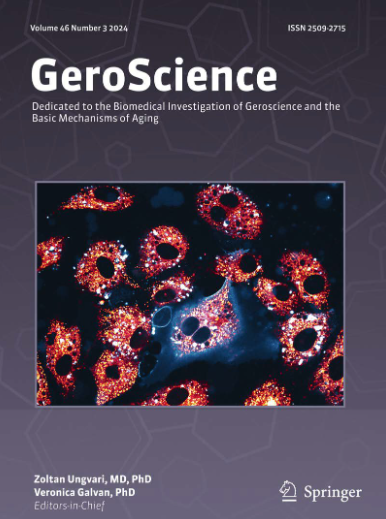A proper combination of movement and stillness: the interaction effect of sleep duration and physical activity on longitudinal cognitive performance in Chinese middle-aged and older adults.
IF 5.3
2区 医学
Q1 GERIATRICS & GERONTOLOGY
引用次数: 0
Abstract
Previous studies have shown that both nighttime sleep duration (NSD) and physical activity (PA) are independently associated with geriatric cognition. However, most of these studies are cross-sectional and do not account for the interaction between NSD and PA, and the relationship between midday nap duration (MND) and cognition is unclear. Data collected between 2011 and 2018 were obtained from the China Health and Retirement Longitudinal Study (CHARLS). Generalized linear models and generalized estimating equations were used to analyze the impacts of NSD, MND, total sleep duration (TSD, NSD + MND), PA, and their interactions on both baseline and longitudinal cognitive performance. Combining the results of baseline and longitudinal univariable analyses, inverted U-shaped patterns were found, with the best choices being the 6-8 h of NSD and TSD (P < 0.05), the 0-90 min of MND (P < 0.05), and moderate PA (MPA, P < 0.05). The interaction analysis revealed that individuals with sleep duration of 6-8 h or < 6 h who engaged in MPA demonstrated significantly better cognitive performance and maintenance (P < 0.05), but for those with > 8 h of sleep, little significant differences in cognitive outcomes were observed across varying PA regimens. Considering both univariable and interaction effects, an optimal combination of movement and stillness for better cognitive function is to maintain 6-8 h of nighttime sleep, take a midday nap, and actively engage in MPA.运动与静止的适当结合:睡眠时间和体力活动对中国中老年人纵向认知表现的相互作用。
先前的研究表明,夜间睡眠时间(NSD)和身体活动(PA)与老年认知独立相关。然而,这些研究大多是横断面的,没有考虑到NSD和PA之间的相互作用,午睡时间(MND)和认知之间的关系尚不清楚。2011年至2018年收集的数据来自中国健康与退休纵向研究(CHARLS)。采用广义线性模型和广义估计方程分析NSD、MND、总睡眠时间(TSD、NSD + MND)、PA及其相互作用对基线和纵向认知表现的影响。结合基线和纵向单变量分析的结果,发现倒u型模式,最佳选择是6-8小时的NSD和TSD (p8小时的睡眠),不同PA方案的认知结果差异不显著。考虑到单变量效应和交互效应,运动和静止的最佳组合是保持6-8小时的夜间睡眠,午睡,积极参与MPA。
本文章由计算机程序翻译,如有差异,请以英文原文为准。
求助全文
约1分钟内获得全文
求助全文
来源期刊

GeroScience
Medicine-Complementary and Alternative Medicine
CiteScore
10.50
自引率
5.40%
发文量
182
期刊介绍:
GeroScience is a bi-monthly, international, peer-reviewed journal that publishes articles related to research in the biology of aging and research on biomedical applications that impact aging. The scope of articles to be considered include evolutionary biology, biophysics, genetics, genomics, proteomics, molecular biology, cell biology, biochemistry, endocrinology, immunology, physiology, pharmacology, neuroscience, and psychology.
 求助内容:
求助内容: 应助结果提醒方式:
应助结果提醒方式:


